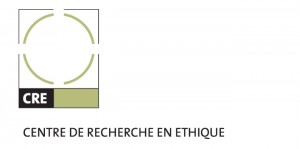Les midis de l’éthique: Susan Evans
Dans le cadre des Midis de l’éthique, le CRÉUM vous invite à venir entendre:
Susan Evans, écrivaine et recherchiste
Poignant Propaganda: Silver Cross Mothers and Remembering the Great War
Résumé:
Beaucoup de choses ont changé depuis que j’ai commencé à étudier les martyrs. Je voyais les martyrs comme des personnes qui avaient existé dans un lointain passé. Aujourd’hui, le mot ‘martyr’ se voit couramment dans nos journaux et, avec ce changement a amené une évolution de sens puisque les discussions entourant le suicide et l’homocide font maintenant partie du débat. De mon point de vue, le martyre est la pratique de mourir pour Dieu ou une cause et d’en parler. C’est un discours qui change et se développe au fil du temps. Ma présentation portera sur un élément particulier et poignant de plusieurs histoires de martyrs : l’image de la mère d’un martyr qui supporte le sacrifice de son enfant. Cette image n’est pas rare et n’est pas nouvelle. Ces histoires se retrouvent aussi dans les traditions juives, chrétiennes, islamiques, sikh et baha’i.
Comment une mère, d’entre toutes les personnes, peut-elle supporter le sacrifice de son enfant? Pour comprendre ce difficile phénomène, j’examine ma propre culture anglo-saxonne afin de voir s’il existe un équivalent. Chaque année, lors du Jour du Souvenir, la Silver Cross mère pose une couronne sur un cénotaphe en la mémoire de toutes les mères et épouses des soldats tués. Le symbolisme de son geste trouve sa source dans la Première Guerre mondiale lorsque les toutes premières médailles Silver Cross ont été frappées. Je vais parler de l’image de ces mères en deuil, appuyant ce qui était alors vu comme une noble cause et utilisées dans la propagande de guerre et son souvenir.
Summary:
Much has changed in the last ten years since I began studying about martyrdom. It used to be something that happened in the distant past. Now the word « martyr »
can be found almost daily in our newspapers and with
this change has come an evolution of meaning where
discussions of suicide and homicide have now entered
the debate. I take martyrdom to be a practice of dying
for God or a cause and talking about it. It is a
discourse that changes and develops through time. The
focus of this presentation will be on a particular and
poignant element of many martyr stories: the image of
the mother of a martyr supporting the sacrifice of her
child. This image is not uncommon in today’s news
neither is it new. These stories can be found in the
Jewish, Christian, Islamic, Sikh and Baha’i
traditions.
How could a mother, of all people, support the
sacrifice of her child? To understand this difficult
phenomenon I look to my own Anglo-Canadian culture to
see if there is an equivalent. Each year on
Remembrance Day the Silver Cross mother lays a wreath
on the cenotaph in the name of all mothers and wives
of slain soldiers. The symbolism of her act goes back
the First World War when the Silver Cross medal was
first struck. I will discuss how the image of the
bereaved mothers, supportive of what was then thought
to be a noble cause, was used in the propaganda of the
war and its remembrance.
où et quand?
Le jeudi 15 novembre à 12 h 30
Salle de séminaire du CRÉUM (309)
2910 Boul. Édouard-Montpetit
Métro Université de Montréal



